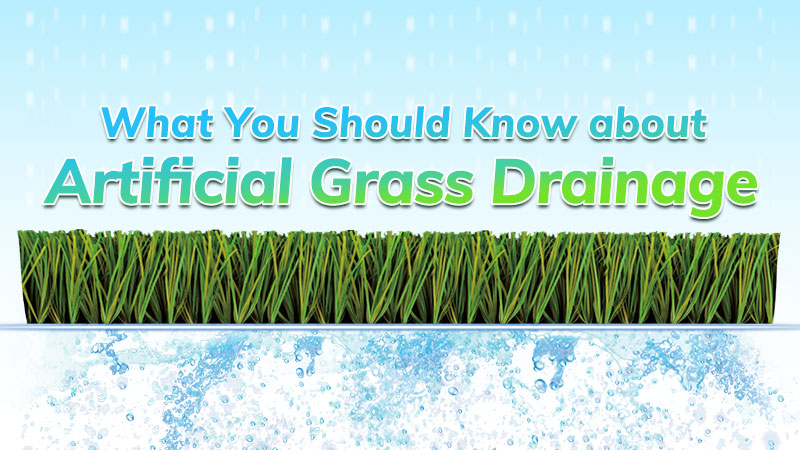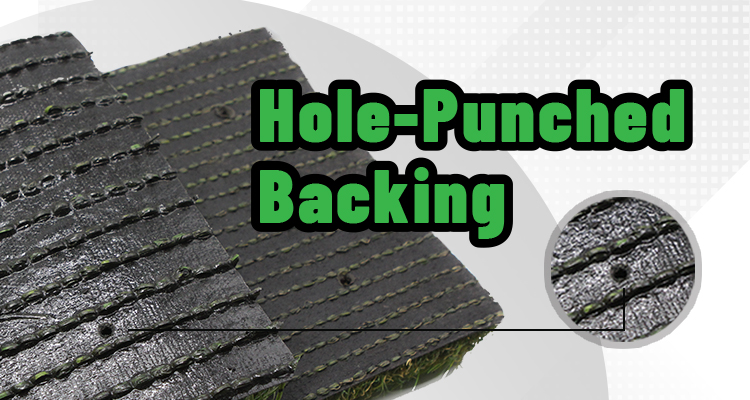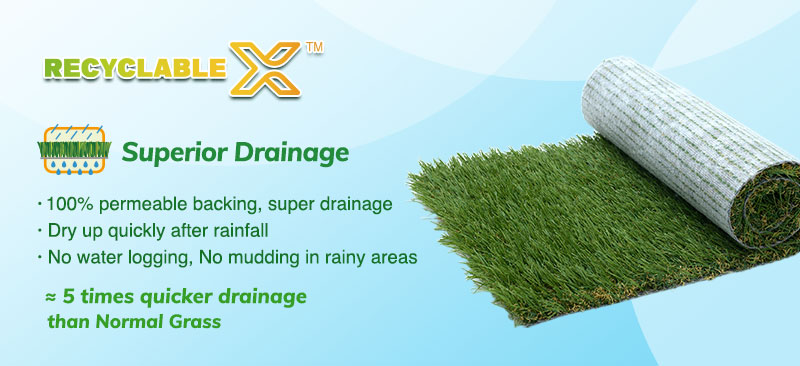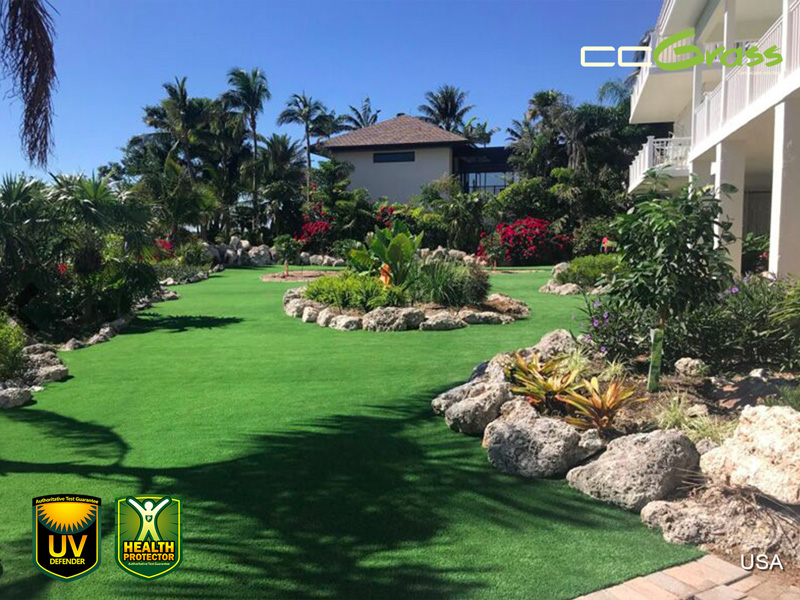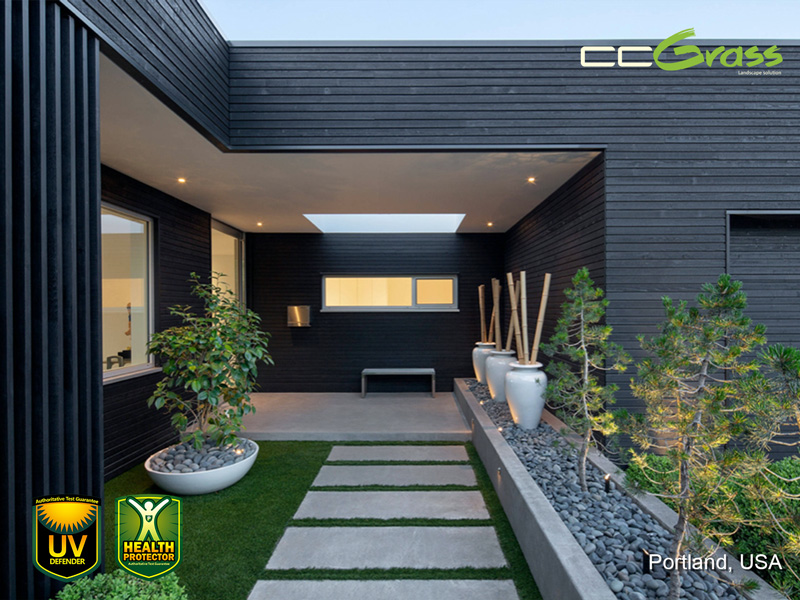What You Should Know about Artificial Grass Drainage
- 01/14/2024
Artificial turf doesn’t need soil to stay healthy and green, which means you can enjoy a clean, mud-free surface no matter the weather conditions. So how does artificial grass drain water? Does buying artificial grass require additional investment in drainage? This article will give a detailed answer, then read on!
In this article:
Do I need to purchase a separate drainage system for artificial grass?
You don’t need to buy a separate drainage system in most cases for the reason that artificial grass has its own very effective drainage solution. Artificial grass drainage is designed to allow water to penetrate through the turf backing and drain through the sub-base to the water table, just like regular grass. On top of that, it allows more water to pass through the soil below than natural grass.
Artificial turf backing drainage
-
Hole-Punched backing
The most common type of astro turf backing is the “Hole-Punched” backing, in which drainage holes run through the turf at equal distances to ensure rapid drainage. Due to its durability, performance and cost, it has been used for decades and remains one of the most popular types of backing, widely used in gardens, landscapes and patios.
-
100% permeable backing
Another type of backing is 100% permeable and is mostly used for pet lawns or areas that require a lot of drainage. Pet turf drainage is effectively addressed with this specialized backing, facilitating quick urine elimination to avoid odor, stains, and bacterial growth.
-
Best drainage artificial grass
Recyclable XTM Series is a revolutionary 100% recyclable artificial grass. Its innovative new backing brings you superior drainage, softness and ultra-lightweight. Recyclable X brings a matchless user experience into the world of landscape grass.
Sub-base for artificial grass
What to put under fake grass? To prepare soil surfaces, we recommend the excavation of the topsoil followed by the addition of aggregates, such as high-quality crushed rock, sand, or gravel—materials known for their excellent drainage and permeability.
It’s important to compact the base layer to ensure stability and achieve the best results. A layer approximately 3 inches thick typically suffices for optimal performance.
Reasons for poor drainage of artificial grass
While most of the synthetic grass backing drains very well, but some of poor drainage still plagues some people, especially during the rainy season. Problems are usually caused by errors in the installation process or natural geological problems.
There are a number of reasons why fake grass is not installed properly, the most common being the use of incorrect infill causing clogged drainage holes or the installation of an incorrect foundation. As for the geology, it could be that the surface is uneven causing natural puddles, or that the soil is a clay type, which makes drainage difficult.
How to prevent poor drainage of artificial grass?
If you live in an area with well-drained soil, then you don’t have to plan for drainage, but if your garden already had drainage problems prior to installing artificial lawn, you’ll need to talk to the installation team so that they can prepare your garden for optimal drainage possible.
On condition that the cause of drainage problems is related to soil type, an effective artificial grass installation will solve the problem. Most geologic causes of poor garden drainage can be addressed by surface flattening and replacing the existing soil with a more suitable crushed granite or stone subbase.
Most problems can be solved by installing the correct base, eliminating the need to install an expensive drainage system. It is only in very extreme cases that you may need to resort to expensive drainage as a last resort! To learn more details about the installation process, check out our How to Install Artificial Grass page here.
Artificial grass drainage on concrete
Synthetic grass can be installed on most surfaces, including concrete and tile. It’s always important to consider drainage, and you’ll need to check that the concrete which you are laying the grass on drains water properly. Ideally, there should be a slight fall in the concrete to allow the water to flow away. If there are drainage holes in the concrete, please ensure that the holes are not covered by grass or glue.
If the concrete is not properly drained, it is recommended to drill holes in the ground, not very large, 16mm would be ideal. Once the holes are made, they should be filled with pea gravel to ensure that the water can escape and be properly absorbed.If you feel the area needs better drainage, you can place drainage cells, which will facilitate air movement and allow moisture to flow under the lawn.
Related article: Everything You Should Know about Installing Artificial Grass on Concrete
Conclusion
In conclusion, artificial grass is a very effective drainage solution that, if installed correctly, can help with drainage problems. If you are interested in our 100% permeable synthetic turf products, or have any other confusion about artificial grass drainage and installation, please feel free to call us at 86 25 6981 1666 or email us at [email protected].


